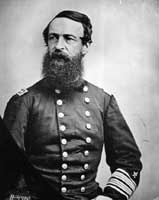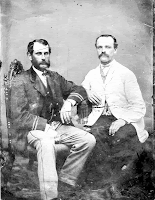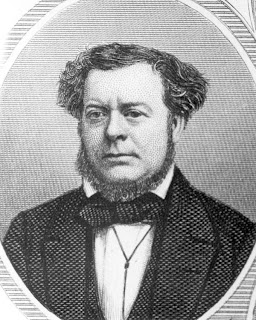Currier & Ives Illustration
Today marks the 149th anniversary of the storied engagement between the USS
Monitor and CSS
Virginia. The following is an excerpt from an account of the
Monitor and
Virginia (Titled "The First of Iron-Clads") from John Taylor Wood, CSA. No changes have been made to the original text to keep with the historical integrity of the document.
Excerpt from "The First of Iron-Clads"
But at daybreak we discovered, lying between us and the Minnesota, a strange-looking craft, which we knew at once to be Ericson's Monitor, which had long been expected in Hampton Roads, and of which, from different sources, we had a good idea. She could not possibly have made her appearance at a more inopportune time for us, changing our plans, which were to destroy the Minnesota, and then the remainder of the fleet below Fort Monroe. She appeared but a pigmy compared with the lofty frigate which she guarded. But in her size was one great element of her success. I will not attempt a description of the Monitor; her build and peculiarities are well known.
After an early-breakfast, we got under way and steamed out toward the enemy, opening fire from our bow pivot, and closing in to deliver our starboard at short range, which was returned promptly from her 11-inch guns. Both vessels then turned and passed again still closer. The Monitor was firing every seven or eight minutes, and nearly shot struck. Our ship was working worse and worse, and after the loss of the smoke-stack, Mr.Ramsey, chief engineer, reported that the draught was so poor that it was with great difficulty he could keep up steam. Once or twice the ship was on the bottom. Drawing 22 feet of water, we were confined to a narrow channel, while the Monitor, with only 12 feet immersion, could take any position, and always have us in range of her guns. Orders were given to concentrate our fire on the pilot-house, and with good result, as we afterward learned. More than two hours had passed, and we had made no impression on the enemy so far as we could discover, while our wounds were slight. Several times the Monitor ceased firing, and we were in hopes she was disabled, but the revolution again of her turret and the heavy blows of her 11-inch shot on our sides soon undeceived us.
Coming down from the spar-deck, and observing a division standing "at ease," Lieutenant Jones inquired:
"Why are you not firing, Mr.Eggleston?"
"Why, our powder is very precious," replied the lieutenant; "and after two hours' incessant firing I find that I can do her about as much damage by snapping my thumb at her every two minutes and a half."
Lieutenant Jones now determined to run her down or board her. For nearly an hour we maneuvered for a position. Now "Go ahead!" now "Stop!" now "Astern!" The ship was unwieldy as Noah's ark. At last an opportunity offered. "Go ahead, full speed!" But before the ship gathered headway, the Monitor turned, and our disabled ram only gave a glancing blow, effecting nothing. Again she came up on our quarter, her bow against our side, and at this distance fired twice. Both shots struck about half-way up the shield, abreast of the after pivot, and the impact forced the side in bodily two or three inches. All the crews of the after guns were knocked over by the concussion, and bled from the nose or ears. Another shot at the same place would have penetrated. While alongside, boarders were called away; but she dropped astern before they could get on board. And so, for six or more hours, the struggle was kept up. At length, the Monitor withdrew over the middle ground where we could not follow, but always maintaining a position to protect the Minnesota. To have run our ships ashore on a falling tide would have been ruin. We awaited her return for an hour; and at 2 o'clock p.m. steamed to Sewell's Point, and thence to the dockyard at Norfolk, our crew thoroughly worn out from the two days' fight. Although there is no doubt that the Monitor first retired,- for Captain Van Brunt, commanding the Minnesota, so states in his official report,-the battle was a drawn one, so far as the two vessels engaged were concerned. But in its general results the advantage was with the Monitor. Our casualties in the second day's fight were only a few wounded.
This action demonstrated for the first time the power and efficiency of the ram as a means of offense. The side of the Cumberland was crushed like an egg-shell. The Congress, even with our disabled bow, would have shared the same fate but that we could not reach them on account of our great draught.
It also showed the power of resistance of two iron-clads, widely differing in construction, model, and armament, under a fire which in a short time would have sunk any other vessel then afloat.
The Monitor was well handled, and saved the Minnesota and the remainder of the fleet at Fort Monroe. But her gunnery was poor. Not a single shot struck us at the water-line, where the ship was utterly unprotected and where one would have been fatal. Or had the fire been concentrated on any one spot, the shield would have been pierced; or had larger charges been used, the result would have been the same. Most of her shot struck us obliquely, breaking the iron of both courses, but not injuring the wood backing. When struck at right angles, the backing would be broken, but not penetrated. We had no solid projectiles, except a few of large windage, to be used as hot shot, and, of course, made no impression on the turret. But in all this it should be borne in mind that both vessels were on their trial trip, both were experimental, and both were receiving their baptism of fire.
On our arrival at Norfolk, Commodore Buchanan sent for me. I found him at the Naval Hospital, badly wounded and suffering greatly. He dictated a short dispatch to Mr.Mollory, Secretary of the Navy, stating the return of the ship and the result of the two days' fight, and directed me to proceed to Richmond with it and the flag of the Congress, and make a verbal report of the action, condition of the Virginia, etc.
I took the first train for Petersburg and the capital. The news had preceded me, at every station I was warmly received, and to listening crowds was forced to repeat the story of the fight. Arriving at Richmond, I drove to Mr. Mallory's office and with him went to President Davis's, where we met Mr.Benjamin, who, a few days afterward, became Secretary of State, Mr.Seddon, afterward Secretary of War, General Cooper, Adjutant-General, and a number of others. I told at length what had occurred on the previous two days, and what changes and repairs were necessary to the Virginia. As to the future, I said that in the Monitor we had met our equal, and that the result of another engagement would be very doubtful.
Mr. Davis made many inquiries as regarded the ship's draught, speed, and capabilities, and urged the completion of the repairs at as early as a day as possible. The conversation lasted until near midnight. During the evening the flag of the Congress, which was a very large one, was brought in, and to our surprise, in unfolding it, we found it in some places saturated with blood. On this discovery it was quickly rolled up and sent to the Navy Department, where it remained during the war; it doubtless burned with that building when Richmond was evacuated.
The news of our victory was received everywhere in the South with the most enthusiastic rejoicing. Coming, as it did, after a number of disasters in the south and west, it was particularly grateful. Then again, under the circumstances, so little was expected from the navy that this success was entirely unlooked for. So, from one extreme to the other, the most extravagant anticipation's were formed of what the ship could do. For instance: the blockade could be raised, Washington leveled to the ground, New York laid under contribution, and so on. At the North, equally groundless alarm was felt. As an example of this, Secretary Welles relates what took place at a Cabinet meeting called by Mr. Lincoln on the receipt of the news. "The Merrimac,' said Stanton,`will change the whole character of the war; she will destroy, seritim, every naval vessel; she will lay all the cities on the seaboard under contribution. I shall immediately recall Burnside; Port Royal must be abandoned. I will notify the governors and municipal authorities in the North to take instant measures to protect their harbors.' He had no doubt, he said, that the monster was at this moment on her way to Washington; and, looking out the window, which commanded a view of the Potomac for many miles, `Not unlikely, we shall have a shell or cannon-ball from one of her guns in the White House before we leave this room.' Mr.Seward, usually buoyant and self-reliant, overwhelmed with the intelligence, listened, in responsive sympathy to Stanton, and was greatly depressed, as indeed, were all the members."
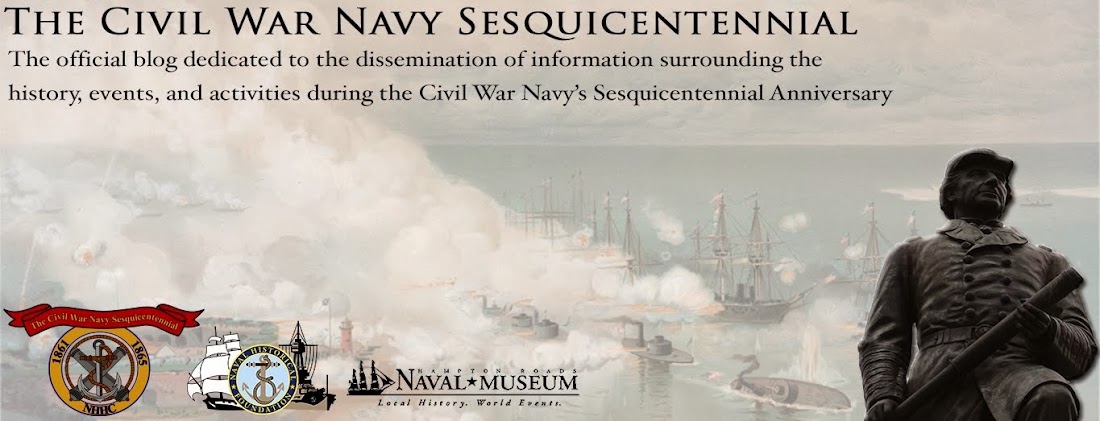


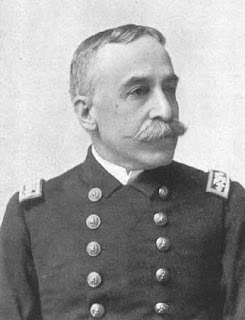



 9:00 AM. Arrived on-site and found the other guys of my unit that came up from Florida for this event. We had a display in the navy encampment with other units and volunteers from the museum.
9:00 AM. Arrived on-site and found the other guys of my unit that came up from Florida for this event. We had a display in the navy encampment with other units and volunteers from the museum.


